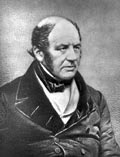Dysaesthesia aethiopica facts for kids
Dysaesthesia aethiopica was a made-up "mental illness" described in 1851 by an American doctor named Samuel A. Cartwright. He claimed it explained why enslaved people might seem lazy. Today, experts agree that dysaesthesia aethiopica was not a real disease. Instead, it's seen as an example of pseudoscience, which is fake science. It was part of a harmful idea called scientific racism, which uses false scientific claims to suggest one race is better or worse than another.
History
Cartwright claimed this "illness" only affected African Americans. Slave overseers sometimes called it "rascality." He said people with dysaesthesia aethiopica had skin that didn't feel things much. They also seemed sleepy or slow in their thinking. Cartwright also claimed there were always marks or injuries on their bodies.
He insisted that this "disease" was real and proven. However, he said other doctors hadn't noticed it because they hadn't focused enough on the health of Black people.
Cartwright believed dysaesthesia aethiopica was "easy to cure." He thought the skin needed to be stimulated. He suggested a "treatment" that included washing the person with warm water and soap. Then, oil would be rubbed all over their skin. After that, the oil would be slapped in with a wide leather strap. Finally, the person would be made to do hard work in the sunshine.
Some people have pointed out that the "marks" Cartwright mentioned might have been caused by the whipping itself. After this "treatment," Cartwright claimed the enslaved person would "look grateful and thankful" to the white person. He believed this "compulsory power" (meaning forced power) had "restored his sensation" and cleared his mind.
Cartwright also claimed that dysaesthesia aethiopica was more common among free Black people living together. He said it attacked only enslaved people who lived like free Black people, especially concerning their diet, drinks, and exercise. He even claimed that "nearly all" free Black people were affected by it if they didn't have a white person to guide them. He completely disagreed with doctors who thought the behavior came from the difficult lives of enslaved people. He said they "ignorantly attribute the symptoms to the debasing influence of slavery on the mind."
See also
 In Spanish: Dysaesthesia aethiopica para niños
In Spanish: Dysaesthesia aethiopica para niños
- Drapetomania, another made-up "mental illness" that claimed to explain why enslaved Black people tried to escape.
- Scientific racism
- Minority stress


